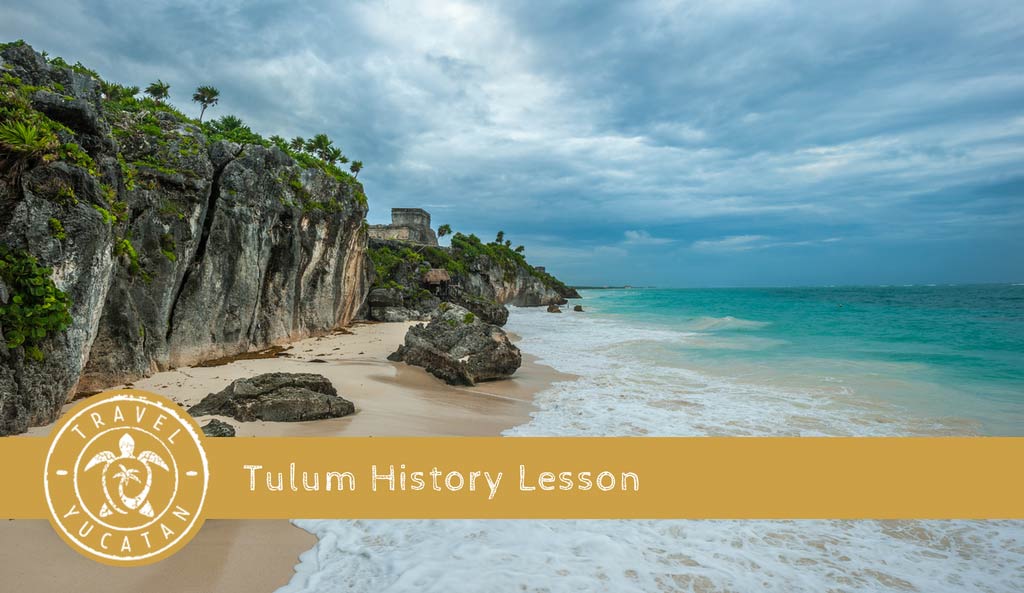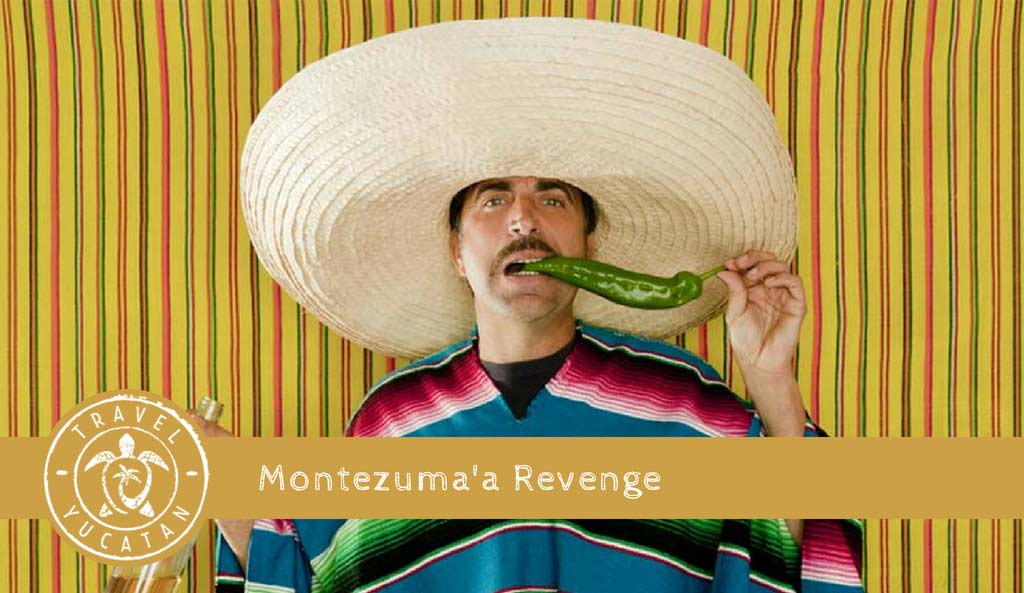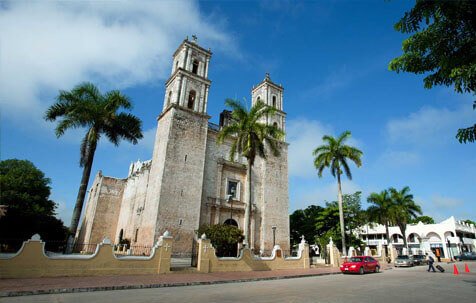Causes of Indigenous Migration
1. The origin of indigenous migration is tied to that of the industrialization process followed in Mexico since the decade of the 1940’s and to the quick transformation of an agriculturally based economy to an urban industrialized economy. This rapid change had lowered the level of agricultural production in the indigenous areas that become even more marginal, and favored investments in the northwestern part of the country where commercial agriculture began to rapidly develop (with concomitant needs of transport, credit, improved seed varieties, fertilizers, farm machinery, etc.). The Northern regions immediately became poles of attraction for the indigenous labor force, especially after 1980. There was already a tradition of migration among some indigenous communities related to religious feasts, as for instance some of the Maya communities in Yucatan that periodically went to visit sacred sites. Among the Zapotecs and Mixtecs in Oaxaca, migration was linked traditionally to the commercial activities of the Isthmus of Tehuantepec. The Purepechas of Michoacan began to migrate to the United States in the 1940’s. Today, there is at least one member of the household who emigrates, a phenomenon found in all the 56 indigenous groups of the country.
This migration, initially characterized by the migration of a single male member of the household, was reinforced through time and slowly began to include brothers, sons, kinfolk, until it became a mass migration that includes women as well.
Table 6.1 Poles of Expulsion and Attraction of Migrants
| States of Expulsion | States of Attraction |
| Baja California Chihuahua Coahuila Distrito Federal Durango Estado de México Guanajuato Guerrero Jalisco Michoacán Puebla Oaxaca Sinaloa Sonora Veracruz Zacatecas |
Chihuahua (Chihuahua) Ciudad de México Ciudad Juárez (Chihuahua) Ciudad de Guadalajara (Jalisco) Ciudad León (Guanajuato) Ciudad Matamoros (Tamaulipas) Ciudad Mérida (Yucatán) Ciudad Monterrey (Nuevo León) Ciudad Nuevo Laredo (Tamaulipas) Ciudad Orizaba (Veracruz) Ciudad Puebla (Puebla) Ciudad San Luis Potosí ( San Luis Potosí) Ciudad Tampico (Tampico) Ciudad Tijuana (Baja California) Ciudad Torreón (Durango) Ciudad Veracruz, (Veracruz) |
Source: Indigenous Migration in Mexico, Instituto Nacional Indigenista, 1996.2. The indigenous population migrates to the 16 cities considered by the National Population Council (CONAPO) as the major centers of attraction in the country. Mexico City, Guadalajara and Monterrey are the largest national poles of attraction and focal points of concentration of the migrating indigenous population.
Table 6.2 -Causes of Indigenous Migration
| 1. Ecological Factors |
Region or Affected Indigenous Group |
| Low productivity of land | Oaxaca, mountainous part of Guerrero, The Tarahumara Sierra, Otomi and Mazahua (States of Mexico and Hidalgo). |
| Climatological Phenomena: droughts, frosts, hurricanes. |
Huasteca region, Tarahumara Sierra and the coastal zones of the country. |
| Soil deterioration due to the introduction of commercial products. |
Yucatán, Huasteca, Petroleum producing areas (Veracruz, Tabasco,) Northern Sierra region of Puebla. |
| Down time in the rainfed, traditional agricultural cycle. |
Affecting all indigenous regions. |
| 2. Land Tenure | |
| Lack of lands and land conflicts due to illegal encroachment. |
Huasteca, Chiapas, and the Huichol region of Jalisco. |
| Large scale livestock production requiring extensive grasslands. |
Huasteca, Chiapas and Totonaca area of Veracruz. |
| Construction of dams, roads, and industrial plants. |
Petroleum producing area of Veracruz, Isthmus region in Tehuantepec, State of México, the Tarahuamara Sierra and the region of the Papaloapan River. |
| 3. Lower prices of the cash commercial crops. |
|
| Coffee, henequén, sugar, tobacco, cocoa, tomato, citric fruits and others. |
Chiapas, Huasteca, Northern Sierra of Puebla, Totonaca region of Veracruz, Mazahuas and Otomís of the State of Mexico, the Chontal zone of Oaxaca, Huichol region of Jalisco, the Yucatán Peninsula. |
| Decreasing demand for artisan products such as pottery, basketry, textiles, etc. |
Affecting all indigenous regions especially the mountain area of Guerrero, The Tarahumara Sierra, and Oaxaca. |
| 4. Resettlement and involuntary relocation |
|
| Due to assignation of lands to new non-indigenous mestizo– colonizers. |
Chiapas, Nahuas of Michoacán, Mazahuas and Otomís (States of Hidalgo and Mexico) |
| Inter-ethnic conflicts, armed conflict and military occupation. |
Guerrero mountain area. |
| 5. Social and Demographic Factors |
|
| Lack of basic social services | Affecting the majority of the indigenous regions, with a focus on the mountain regions of the States of Guerrero, Oaxaca y Chiapas. |
| Demographic Pressure | In the majority of indigenous areas with exception of the northern states and their indigenous areas. |
| Religious Conflicts | Chiapas, Guerrero, and some communities of Oaxaca and Michoacan. |
Types of Migration
3. In 1980, there were 548,000 indigenous people (10.6 percent of the total indigenous population), settled in areas other than their place of origin within the country. This figure does not include the indigenous migrants outside the country, especially in the United States, that cannot be quantitatively verified, but that are known to be a considerable number.
4. The large cities, especially Mexico City, are the points of attraction of the indigenous migrants. In 1980 Mexico City registered 323,000 indigenous language speakers of 39 different languages. Thus, Mexico City has the largest concentration of indigenous peoples in the entire country.
5. In the last 20 years, the country has received indigenous refugees from Guatemala, especially from the Kanjobal, Ixil, Chuj, Cakchiquel, and Jacalteco groups that have settled in the border regions and in the special camps created for them in Campeche, Quintana Roo and Chiapas. These refugees have been estimated to surpass 100,000 in the early 80’s, and there are still over half of this number residing in Mexico. Their presence, congruent with the policy of asylum and the evidence of indigenous solidarity among indigenous peoples, has enriched the historically important exchanges among the indigenous Maya groups and added to Mexico’s rich cultural diversity.
6. Indigenous migration has four distinct types
Temporary Migration
Permanent Migration
Internal Migration
International Migration
Temporary Migration
7. Temporary migration is the most common among indigenous people and is linked to the agricultural cycle, and occurs at two distinct periods. The first takes place after the harvest and after the religious ceremonies associated with the agricultural cycle have concluded. The second takes place after the land has been prepared for the next cycle and sown. The exact times of these migrations vary among the indigenous groups. The areas of attraction of this temporary migration are generally the large agricultural fields, the coffee plantations, the sugar cane fields, and other agriculture and livestock related enterprises. Agricultural migrants of this type are found throughout the country as well as in the United States. This type of migration constitutes a strategy to produce extra income for the households and permits the continuity of the community’s life.
6.3 States of Attraction of the Largest Indigenous Population
| State | Number | |
| Distrito Federal | 117,760 | |
| Veracruz | 76,482 | |
| Estado de México | 57,638 | |
| Sinaloa | 18,577 | |
| Campeche | 17,695 | |
| Baja California | 17,454 | |
| Quintana Roo | 10,426 | |
| Jalisco | 9,508 | |
| Tabasco | 6,138 | |
| Total | 343,863 | This constitutes 81.7 percent of the total indigenous internal migration in the country. |
The job market for the indigenous population is diverse:
- Agricultural laborers
- Services
- Informal commercial activities
Agro-industrial enterprises exporting vegetables in the northern states of Sinaloa, Sonora and Baja California.
Harvesters of tobacco, sugar cane coffee, banana, orange, and fruits in the states of Veracruz, San Luis Potosí, Nayarit, Oaxaca, Chiapas, Hidalgo. Mexico City and other smaller urban areas where they are employed in informal sectors of the economy, as gardeners, construction workers, servants, and mendicants.
8. A longer-term migration can be detected by analyzing information about birthplace and current place of residence. These data show paths of migration throughout individuals’ lives. In 1990, a total of 450,000 indigenous language speakers lived in a place other than their place of birth, representing 8.7 percent of the national total. Within this global migratory stream, the most outstanding is the State of Oaxaca with migrants totaling nearly one third of the total (142,000), and Yucatan with slightly over one sixth of the total (82,000). Seen from the perspective of the poles of attraction, the Federal District is predominant (93,000), followed by the State of Mexico (9,000) and Quintana Roo (78,000).
9. The largest migratory flow between two states is in the State of Yucatan with 71,000 indigenous people living in Quintana Roo, or 15.5 percent of the total national migration, and 87 percent of the total migration in the State of Yucatan and 91.4 percent of the total migration into Quintana Roo. This Maya migration can be attributed to preference to remain in their traditional habitat. The migrants from Oaxaca, in contrast, are out of their traditional habitat in the Federal District (34,373), the State of Mexico (34,029) and Veracruz (32,078). This amounts of 70.8 percent of the total migration out of the State of Oaxaca. Ninety five percent of these migrants settle in the municipalities surrounding the Federal District.
10. Several temporary migratory streams go from the center and northwest starting with the sugar-cane harvest in Morelos and Puebla, to the Federal District, continue to the region of the Baja and from there to Guadalajara. >From there migrants proceed to Zacatecas, Durango and Chihuahua up to Ciudad Juarez, or from Zacatecas continue to Nuevo Leon and from there to the border areas of the State of Tamaulipas where they are employed in informal and marginal economic activities in the urban areas and often cross the border into the United States.
11. Until now, the more traditional Papago, Cucapas, Kiliwuas, Paipai, Cochimi and Kikapoo, in the northern border area have continued to live in their own dispersed settlements and isolated, socially, culturally, economically, and politically, from the rest the Mexican population. These are rural groups dedicated to livestock production, hunting, limited agriculture, and work as peons in large estates. Their degree of marginality and isolation is so great that the rest of the border population is ignorant of their very existence. These peoples, originally from farther north have traditionally had two basic problems, both linked to the environment.
First, they have confrontations with the non-indigenous border populations and local authorities. Second, the groups in Baja California, dedicated to a hunting and gathering existence over the last two thousand years, have recently, due to the initiatives of SEDESOL, been faced with restrictions to these activities, requiring hunting permits, and excluded from protected areas. These peoples have not easily accepted these new rules, and continue to transgress them and to protest against them.
Permanent Migration
12. Compared to temporary or cyclical migration, permanent migration is less significant numerically, and is generally directed towards the tourist zones along the coasts, and to the state capitals where they settle in colonies according to their place of origin, and where they are marginalized and impoverished. Typically these migrants are males employed in the service sectors and in construction. The women are engaged as servants. Some become factory workers and some are engaged in commerce. These activities are made possible through the social networks established among families and other members in the communities of origin. Mexico City is one of the largest poles of permanent migration. Within the Federal District the wards with most indigenous migrants are ranked as follows:
1. Gustavo A. Madero; 2. Cuauhtemoc; 3. Ixtapalapa; 4. Miguel Hidalgo; 5. Alvaro Obregon; 6. Xochimilco; 7. Milpa Alta.
13. The ties with the communities of origin become attenuated through time; nevertheless, they are evident at the times of the most important religious feasts, such as Holy Week, the main festivity in the community, Christmas, and New Year. The great majority of these migrants have lost ties to agricultural activities, and their duties towards their communities, yet they retain their own agricultural plots and continue to comply with their cargo duties as assigned by the community’s assembly.
14. Colonization of new lands is also associated with permanent migration and occurs mainly in the southern states of the country, such as Chiapas and the Lacandon Jungle. Around 1950 this region received an influx of internal migrants consisting of Choles, Zoques, Tzotziles, Tojolabales, and Tzeltal. The same area has also received population from Veracruz, Zacatecas, Jalisco and Michoacan. Migrants from the northern part of the country and Purepecha populations from Veracruz and Michoacan in particular have settled in the States of Campeche and Quintana Roo. In the State of Tabasco, the expansion of the petroleum industry and projects such as the Plan Chontalpa, also became poles of attraction of indigenous migrants. In the Huasteca region, characterized by its agricultural and livestock activities, there were also a series of new colonies established permanently.
Table 6.4 Indigenous Groups with the Highest Number of Migrants
| Group | State of Origin |
|
Oaxaca |
|
Oaxaca |
|
Oaxaca |
|
Hidalgo |
|
Michoacán |
|
Hidalgo, Veracruz (Nahuas are found in 13 states in the country. |
15. Of the 570 municipalities in the State of Oaxaca, 65 percent of its mainly indigenous population migrate to various large, medium and small urban centers both within Mexico and in the United States. The Mixteco and Zapotec show the highest incidence of migration that tended to be temporary in the past but is now changing to permanent migration.
Table 6.5 Indigenous Groups, Attraction Poles, and Number of Migrants
| Group | Pole of Attraction | Number of Migrants |
| Mixteco (Oaxaca) | Ensenada Baja CaliforniaTijuana Baja California Norte
La Paz Baja California Sur Culiacán, Sinaloa Novolato, Sinaloa |
12,073
3,542
1,285
2,909
2,805
|
| Zapoteco (Oaxaca) | Ensenada Baja California Norte |
2,228
|
| Trigui (Oaxaca) | Ensenada Baja California Norte |
1,770
|
| Nahua (varios estados) | Monterrey, Nuevo LeónTampico, Tamaulipas
Altamira, Tamaulipas Matamoros, Tamaulipas |
1,775
1,560
1,321
11,296
|
16. The indigenous population has increased significantly in these northern cities of the country. According to statistics compiled by the National Geographic and Statistical Institute, out of the 241,080 indigenous people living in border cities, 72,000 (30 percent) are migrants. In these cities the indigenous population has settled in encampments on the margins of the cities, with social networks linking them to their kinfolk in their communities. This results in maintaining of traditional patterns of behavior such as diet, family structure, traditional feasts, music, etc. while, at the same time, adapting as required to their new environment. The importance of this cannot be minimized since it results in the formation of new identities.
17. On the other hand, migration is not rural-urban alone, but urban-urban. In the first instance, the indigenous population is highly represented. In the decade of the 80’s, indigenous migration became an important phenomenon, affecting both the points of origin and the places of settlement. In 1990, indigenous municipalities in Oaxaca, Guerrero, State of Mexico, Michoacan, Puebla, Veracruz, Chiapas, and Morelos in this order, lost population, while the large urban areas and the northern border area showed a significant increase in the numbers of indigenous language speakers.
Cities in the United States Receiving Indigenous Migrants
18. The northern part of Mexico and the United States is of great attraction to indigenous migrants because they are sources of secure employment in the ranches of San Quintin in Baja California or in the vegetable farms close to the border. From there they are employed as peons or construction workers, incorporated into the service sector or in the formal economy of cities such as Tijuana and Mexicali. From there they migrate to California via San Diego and are received by indigenous organizations, such as the Mixtec or Purepecha, established in the main cities. All this migration is illegal although some later become official residents.
19. Migration of indigenous populations to various cities of the United States constitutes an important source of income. For the Mixtec, who have a long tradition of emigration and are the most numerous in the U.S. according to the Mixtec Integrated Development Program, the remittances sent between 1984 and 1988 amounted to $2,000 million pesos annually. However, as will be seen later, this has grown incrementally in recent years.
20. Temporary migration of indigenous peoples as agricultural workers is of great importance. Their participation in the internal migratory networks, which sometimes extend over thousands of miles, has become a significant complementary source of income of the indigenous economy in most regions of the country. The indigenous labor force is critical to the viability of the most important agro-industrial crops. Until now the degree of impact of the general financial crisis and of the agricultural crisis in particular on migration is unknown. But the economic restriction has definitely affected both the economic strategies of the indigenous groups as well as their pattern of permanent migration. The volume of postal money orders shown here for 1991 can infer the positive impact of the remittances on the communities in Oaxaca.
Table 6.7 Postal Money Orders for Oaxaca in 1991
| Region | Remittances in Millions of Pesos | As % of Total |
| CAÑADA | 10 | 0.08 |
| COSTA | 75 | 0.55 |
| ISTMO | 179 | 1.31 |
| MIXTECA | 5,441 | 39.75 |
| PAPALOAPAN | 76 | 0.56 |
| SIERRA NORTE | 1,671 | 12.20 |
| SIERRA SUR | 1,153 | 8.42 |
| VALLES CENTRALES | 5,082 | 37.13 |
| TOTAL | 13,687 | 100.00 |
21. This table shows the importance of the remittances of international migrants that represented in 1991 the equivalent of about US $2 million. The three regions receiving the most remittances are the Mixtec, Central Valleys, and the Northern Sierra inhabited primarily by Mixtec, Chocholtec, Trique, Zapotec, and Mixes populations who jointly account for 89 percent of the total. This income is equivalent to the total annual budget of the entire State of Oaxaca. If the remittances of national migrants plus the cash migrants bring back were included, the total would be much greater.
22. One of the most important developments among indigenous migrants was the formation, in 1991, of the Bi-National Mixtec-Zapotec Front, which has sought the support of the Mexican Government and of international donor agencies to improve the respect for human and labor rights. This Front, including other ethnic groups of Oaxaca, such as Triques and Chatinos, became the Bi-National Oaxacan Indigenous Front, which has expanded the dialogue on indigenous issues beyond national borders between Mexico and the United States, as well as among Mexico, Guatemala and Belize.
Indigenous Women and Migration
23. Some of the job markets in certain regions of the country, mainly urban and agro-commercial centers, require women as sources of indigenous labor. Women are considered more cost productive, i.e. willing to work double shifts for lower pay. This demand is based on their “docile” nature and the high degree of illiteracy and monolinguism, as well as their status as temporary migrants, permitting employers to avoid paying any benefits. According to the Census information of 1995, and using the criteria of indigenous language speakers, the female indigenous population totals 6.7 million, of which 20 percent are monolingual and 48 percent illiterate (INI 1997).
- Indigenous women of Mazatec, Mixtec, Zapotec, Mixe and Otomi origin migrate primarily to the Federal District where they are employed as servants and in the informal sector.
- Female indigenous migrants involved in agricultural activities are highly represented in the states of Baja California (North and South), Chihuahua, Jalisco, Sonora, Sinaloa, and Tamaulipas.
- States with tourism such as Quintana Roo with Cancun, and Jalisco with Puerto Vallarta, employ indigenous women migrants primarily as hotel workers.
24. There is little doubt that the indigenous women constitute an important element of the indigenous migrant stream and are incorporated into the work force. Temporary migration permits women to maintain their patterns of social and cultural reproduction of the household within the community, where they incorporate new patterns adopted out of necessity in their new environments. This does not obviate the continuity of the traditional forms of behavior but rather enriches them. It is different for the women who migrate at a young age (18) and are employed in
Conclusions
25. As has been described here, the State of Oaxaca stands out with the most indigenous migrants. The States of Quintana Roo, Mexico, and the Federal District are the major poles of attraction of this migration, accounting for 43 percent of the total indigenous inter-state migration of the country. This growing migration of indigenous peoples, and their incorporation into the labor market as a source of cheap labor, illustrates the need to develop new policies to ensure not only better social services such as health and schools for the migrants, but also new credit policies to improve the productivity of agriculture on indigenous lands and the implementation of development projects that will empower the indigenous regions and their populations taking into account their traditional knowledge, and abilities in the management of their natural resource base. It also shows the need for policies to impart training specific to each region and its particular needs. Starting from the perspective of maintaining the traditional customary practices and institutions, the indigenous social capital represents an important national economic and cultural resource which must be included in order to make investments in these regions as advantageous as possible.
Instituto de Ecologia, UNAM







